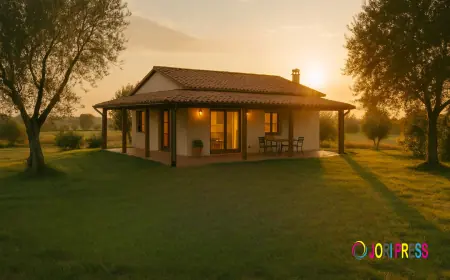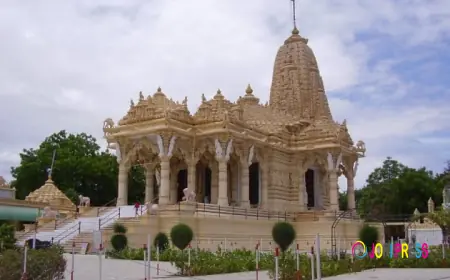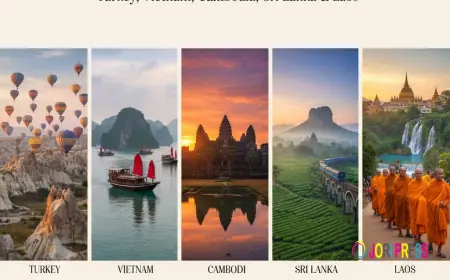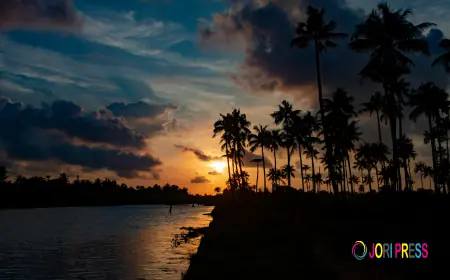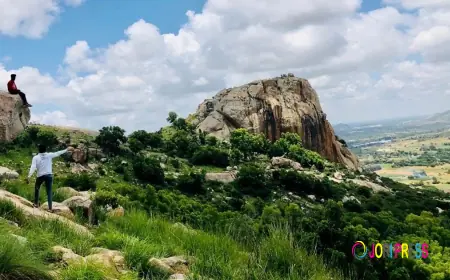Golden Triangle India: Top 10 Must-See Attractions
If you’re considering exploring this iconic route, here are the top 10 must-see attractions that deserve a place on your itinerary
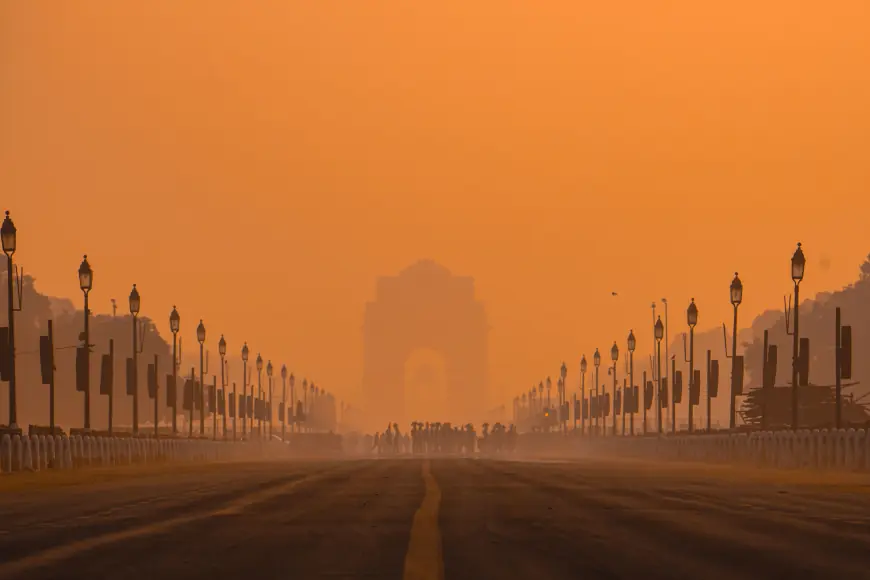
The Golden Triangle of India—comprising Delhi, Agra, and Jaipur—is one of the country’s most celebrated travel routes. Rich in history, architecture, and culture, this circuit offers first-time visitors an immersive taste of India’s grandeur. Whether you are captivated by ancient forts, mesmerising palaces, or bustling bazaars, the Golden Triangle delivers an unforgettable experience.
If you’re considering exploring this iconic route, here are the top 10 must-see attractions that deserve a place on your itinerary.
1. The Majestic Taj Mahal, Agra
The Taj Mahal is undoubtedly the crown jewel of the Golden Triangle and perhaps India’s most recognised landmark. Commissioned by Emperor Shah Jahan in memory of his wife Mumtaz Mahal, the ivory-white marble mausoleum is an enduring symbol of love and artistry. Its intricate carvings, symmetrical gardens, and reflecting pools create a timeless spectacle.
Visiting the Taj Mahal at sunrise or sunset is particularly enchanting as the monument glows in hues of pink, orange, and gold. Beyond its architectural brilliance, the Taj Mahal embodies centuries of craftsmanship and devotion, making it a must-see destination for every traveller.
2. The Red Fort, Delhi
The Red Fort in Delhi is an architectural masterpiece that tells the story of India’s Mughal past. Built in the 17th century by Shah Jahan, this UNESCO World Heritage Site is known for its striking red sandstone walls that stretch for nearly 2.5 kilometres. Inside, you’ll find elegant halls, intricate carvings, and lush gardens that reflect the grandeur of the Mughal Empire.
In the evenings, the Red Fort hosts a captivating light and sound show that narrates the history of Delhi. It’s a wonderful opportunity to step back in time and appreciate how this fort once served as the heart of India’s politics and culture.
3. Qutub Minar, Delhi
The Qutub Minar is another unmissable site in Delhi, standing as the tallest brick minaret in the world at 73 metres. Constructed in the early 13th century, it showcases the skill and vision of medieval Islamic architecture. The tower is adorned with intricate Arabic inscriptions and bands of decorative motifs, making it a remarkable example of Indo-Islamic art.
Surrounding the minaret, you’ll find the Qutub complex, which includes ancient ruins and the famous Iron Pillar, known for its rust-resistant qualities. Visiting this site offers not just a glimpse into history but also an appreciation of the blend of cultures that shaped India.
4. India Gate, Delhi
India Gate is one of Delhi’s most iconic landmarks, serving as a war memorial dedicated to soldiers who lost their lives during World War I. Standing tall along the Rajpath, the 42-metre-high arch is a poignant reminder of sacrifice and bravery. The structure is beautifully illuminated in the evenings, making it a popular spot for both tourists and locals.
The area around India Gate is lively, with lush gardens, street food vendors, and a vibrant atmosphere. It’s a perfect place to enjoy a relaxed evening stroll after exploring Delhi’s bustling streets.
5. Agra Fort, Agra
Often overshadowed by the Taj Mahal, the Agra Fort is another gem in the city’s historical treasure trove. Built primarily from red sandstone, this UNESCO World Heritage Site was once the main residence of the Mughal emperors. Its palaces, audience halls, and courtyards tell stories of royal life and grandeur.
The fort also offers stunning views of the Taj Mahal from certain points, making it an ideal stop for those who wish to explore Mughal architecture in depth. Wandering through its massive gateways and walls gives you a sense of how formidable and majestic this stronghold once was.
6. Fatehpur Sikri, Agra
Located just outside Agra, Fatehpur Sikri is a historical city built by Emperor Akbar in the 16th century. Although it was abandoned after only a few decades, the city remains remarkably well preserved, with palaces, mosques, and courtyards showcasing Mughal architectural excellence.
Highlights include the Buland Darwaza, one of the largest gateways in the world, and the Jama Masjid, a grand mosque that continues to attract visitors. Fatehpur Sikri offers a fascinating look into Akbar’s vision of a capital city and is well worth a visit during your Golden Triangle journey.
7. Hawa Mahal, Jaipur
The Hawa Mahal, or Palace of Winds, is one of Jaipur’s most iconic landmarks. Built in 1799, this five-storey pink sandstone structure was designed with hundreds of small windows, allowing royal ladies to observe street life without being seen. Its unique honeycomb façade is both beautiful and functional, providing natural ventilation during Rajasthan’s hot summers.
Visitors can climb to the top for panoramic views of Jaipur’s bustling streets and markets. The Hawa Mahal is a stunning example of Rajput architecture and an essential stop for photographers and history enthusiasts alike.
8. City Palace, Jaipur
The City Palace of Jaipur is a grand complex that combines Mughal and Rajput architectural styles. Still home to the royal family, it offers a mix of museums, courtyards, and lavish halls. The palace showcases exquisite artefacts, from royal costumes and weaponry to ancient manuscripts.
Walking through the City Palace, you’ll be struck by its colourful frescoes, ornate gateways, and the opulence of its courtyards. It’s a place that vividly illustrates Jaipur’s regal heritage while offering a glimpse into the life of the city’s rulers.
9. Amber Fort, Jaipur
Perched on a hill overlooking Maota Lake, Amber Fort is a spectacular blend of artistry and military design. Built in the 16th century, the fort is known for its intricate mirror work, sprawling courtyards, and grand gateways. Its Sheesh Mahal (Mirror Palace) is particularly famous for its glittering interiors.
Reaching Amber Fort is an experience in itself, whether you opt for a traditional elephant ride or a jeep. Once inside, the blend of Hindu and Mughal architectural styles and the breathtaking views of the surrounding hills make it one of Jaipur’s most memorable attractions.
10. Jantar Mantar, Jaipur
Jantar Mantar, a UNESCO World Heritage Site, is a fascinating astronomical observatory built by Maharaja Jai Singh II in the 18th century. It houses a collection of giant instruments used to measure time, track celestial bodies, and predict eclipses with remarkable accuracy.
What makes Jantar Mantar unique is its scale and precision. Even centuries later, these instruments remain functional, showcasing the advanced scientific knowledge of the period. Visiting the site offers a mix of education and wonder, making it an essential stop in the Pink City.
Planning Your Golden Triangle Journey
The Golden Triangle offers a perfect introduction to India, balancing history, culture, and modernity in equal measure. Travellers can explore these highlights in just a week, making it a highly convenient yet enriching itinerary. The golden triangle tour package price varies depending on the inclusions, but investing in a guided tour ensures you make the most of each destination.
For those who wish to combine this journey with other destinations across India, a reputable tour company in Kerala can assist in crafting a customised itinerary that matches your interests and budget. Whether you want to extend your trip to the backwaters of Kerala or the deserts of Rajasthan, expert guidance ensures a seamless travel experience.
Final Thoughts
Exploring the Golden Triangle is like stepping into a living museum, where every monument tells a story and every city offers a different flavour of India. From the romance of the Taj Mahal to the regal grandeur of Jaipur’s forts, these destinations together create a journey that is both educational and unforgettable.
If you’re planning your first visit to India, this itinerary is the perfect gateway to the country’s incredible diversity and charm.
What's Your Reaction?
 Like
0
Like
0
 Dislike
0
Dislike
0
 Love
0
Love
0
 Funny
0
Funny
0
 Angry
0
Angry
0
 Sad
0
Sad
0
 Wow
0
Wow
0




































